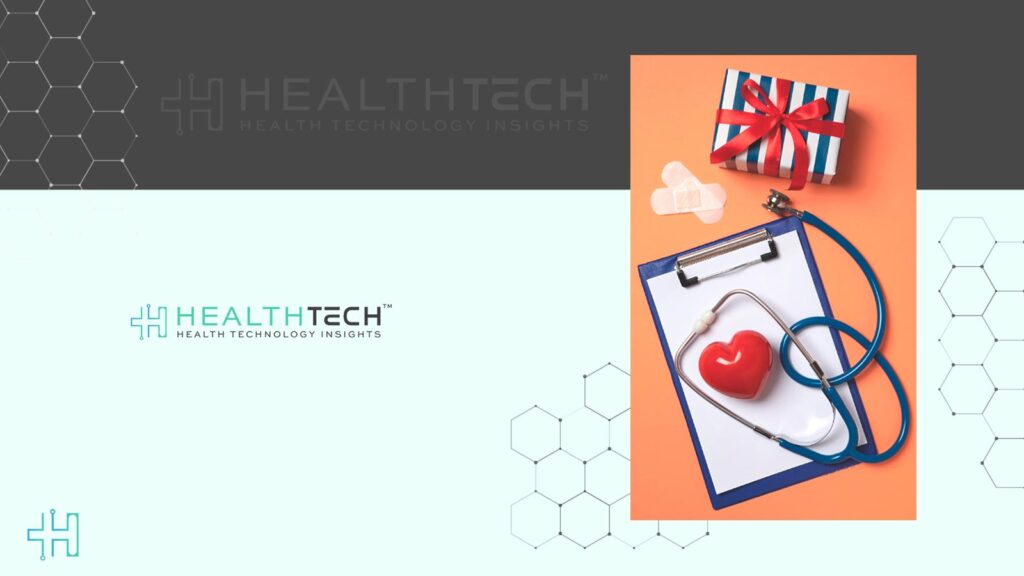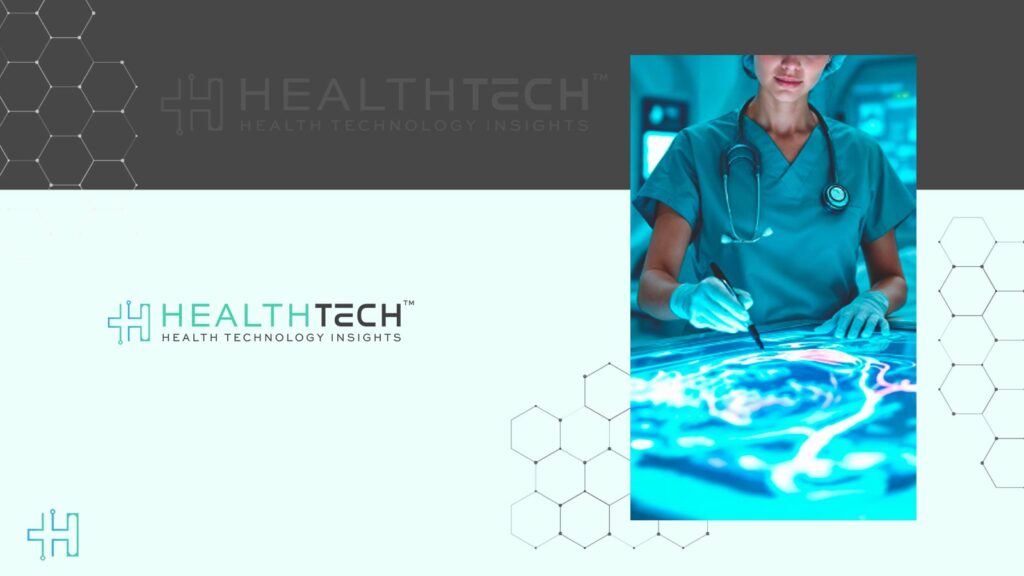The stethoscope used to be a doctor’s most trusted tool. Today, it might just be an algorithm. Imagine walking into a clinic where your doctor is assisted by a digital partner – one that instantly analyzes your medical history, lab results, and even your smartwatch data. This isn’t the future; it’s happening right now.
Welcome to the era of augmented intelligence – where doctors and machines work together, not in competition, but in collaboration. This powerful alliance is reshaping healthcare by combining human intuition with machine precision, allowing physicians to make faster, smarter, and more personalized decisions. The goal isn’t to replace doctors – it’s to help them see what they might miss, act sooner, and care deeper.
What Is Augmented Intelligence?
Let’s clear something up first. Augmented intelligence isn’t the same as artificial intelligence. While artificial intelligence focuses on machines acting independently, augmented intelligence emphasizes collaboration.
It’s about enhancing human capability, not replacing it. Think of it as giving doctors superpowers – tools that process complex data, spot patterns invisible to the human eye, and help make more accurate, timely decisions. In short, AI handles the data; the doctor handles the decisions.
Why Healthcare Needs This Shift Now?
Healthcare has reached a breaking point. Physicians are drowning in administrative work, burnout rates are at record highs, and patients expect faster, more personalized care. Meanwhile, the amount of medical data keeps doubling every few years, from lab reports and imaging scans to wearable device data and genetic information. No human can keep up with that volume.
More than 80% of healthcare-system executives said they expect generative artificial intelligence to have either a significant (26%) or moderate (55%) impact on their organizations in 2025. That means the shift toward AI-driven systems is already underway – pushed by leaders who see augmented intelligence as a strategic necessity, not a futuristic experiment.
Augmented intelligence bridges the gap. It helps doctors make sense of the data tsunami, automates the tedious tasks, and keeps the human connection at the center of care.
How do Doctors and Machines Work Together?
The doctor–machine partnership isn’t science fiction – it’s already happening. Here’s how:
- Smarter Diagnostics: AI tools scan medical images and highlight areas that might require a closer look. The radiologist still makes the call, but now with extra insights and fewer blind spots.
- Personalized Treatment Plans: By analyzing thousands of patient profiles, treatment outcomes, and drug responses, augmented systems help physicians design care plans tailored to each individual’s genetics, lifestyle, and health history.
- Predictive Care: Wearable devices connected to intelligent systems monitor a patient’s vitals continuously. If something looks off, the doctor gets an early alert – sometimes before symptoms even appear.
- Administrative Relief: Voice-to-text systems and automated medical scribes now document patient visits in real time. That means fewer late nights for doctors catching up on notes and more time focused on patient care.
Keeping the Human at the Heart of Care
Machines can’t replace empathy. They don’t build trust, hold hands, or comfort a nervous patient. What they can do is handle the repetitive work and free up doctors to do what they do best – care.
In a global survey of over 16,000 patients and 1,900 healthcare professionals across 16 countries, many reported that AI tools could help serve more patients more effectively – but patients expressed less confidence in those tools than clinicians did. This shows that while the technology is advancing rapidly, building trust in AI-assisted care remains just as important as building the tools themselves.
The power of augmented intelligence lies in balance. Doctors bring emotional intelligence and clinical experience; machines bring precision, consistency, and speed. Together, they deliver care that’s both data-driven and deeply human.
Benefits of the Doctor–Machine Partnership
- Improved Accuracy – Augmented intelligence minimizes human error by cross-verifying diagnoses and identifying red flags early. This means fewer misdiagnoses and better patient outcomes.
- Time Efficiency – Automated data entry, scheduling, and report generation allow clinicians to reclaim hours that used to be lost in paperwork.
- Personalized Medicine – By leveraging vast datasets, doctors can predict how a patient might respond to a treatment based on genetic makeup and previous case patterns.
- Lower Costs – Early detection and targeted treatments often reduce hospital stays and prevent expensive complications.
- Better Patient Engagement – With routine tasks handled by technology, doctors can focus on explaining conditions, discussing options, and building stronger patient relationships.
Hurdles on the Road to Smarter Healthcare
Every innovation brings its own set of challenges, and augmented intelligence is no exception.
- Data Privacy: With so much sensitive health data being shared across systems, ensuring patient confidentiality is non-negotiable.
- Algorithm Bias: Machines learn from data, and if that data is biased, the outcomes can be too. Continuous monitoring and ethical oversight are crucial.
- Overreliance on Technology: The goal is to enhance – not replace – clinical judgment. Doctors must remain the ultimate authority in patient care.
- Training and Adoption: Integrating AI tools into everyday practice requires training, mindset shifts, and sometimes, changes in hospital infrastructure.
Still, none of these are deal-breakers. They’re the growing pains of a rapidly evolving healthcare ecosystem.
Where We’re Headed: The Next Chapter of Intelligent Medicine
As technology advances, augmented intelligence will move from assisting in diagnosis to predicting health trajectories and even preventing diseases before they start. The next wave will focus on precision and preventive care – where AI helps identify risks years ahead of time, allowing doctors to intervene early.
Medical education will also evolve. Future doctors won’t just learn anatomy and pharmacology – they’ll learn how to interpret AI insights, question algorithmic outputs, and ensure that human judgment always leads the way. And as patients become more tech-savvy, they’ll expect this partnership as the norm. A doctor who uses data-driven insights while offering compassionate, personalized care will define the gold standard of medicine.
Beyond Technology: Building Trust Between Doctors and Machines
At its heart, augmented intelligence isn’t about machines taking over – it’s about humans leveling up. It’s about shifting from reactive to proactive healthcare, from paperwork-heavy to patient-focused practice, and from guesswork to precision.
Doctors and machines are learning to trust each other. The machine provides clarity; the doctor provides context. Together, they deliver care that’s not only efficient but also empathetic – a rare combination in modern medicine.
Technology with a Human Heartbeat
The future of healthcare isn’t man or machine. It’s man and machine – working side by side. Augmented intelligence transforms doctors from overworked data managers into empowered decision-makers, capable of providing smarter, faster, and more compassionate care.
As healthcare systems worldwide continue to evolve, those who embrace this partnership will set the standard for what modern medicine can achieve: technology with a human heartbeat.
FAQs
1. What is augmented intelligence in healthcare?
Augmented intelligence refers to technology that enhances a doctor’s decision-making rather than replacing it. It combines human expertise with machine data analysis for better outcomes.
2. How is augmented intelligence different from artificial intelligence?
Artificial intelligence works autonomously, while augmented intelligence supports human judgment—helping doctors make faster, more accurate, and personalized decisions.
3. What are the main benefits of augmented intelligence for doctors?
It reduces administrative tasks, improves diagnostic accuracy, saves time, and allows physicians to focus more on patient interaction and care.
4. Can patients trust AI-assisted healthcare?
Yes. Augmented intelligence operates under strict ethical and medical standards, with doctors retaining full control over every medical decision.
5. What’s the future of augmented intelligence in medicine?
The future lies in predictive and preventive care, where intelligent systems help identify health risks early and personalize treatments for every patient.
Keep reading on Health Technology Insights.
To participate in our interviews, please write to our HealthTech Media Room at sudipto@intentamplify.com



